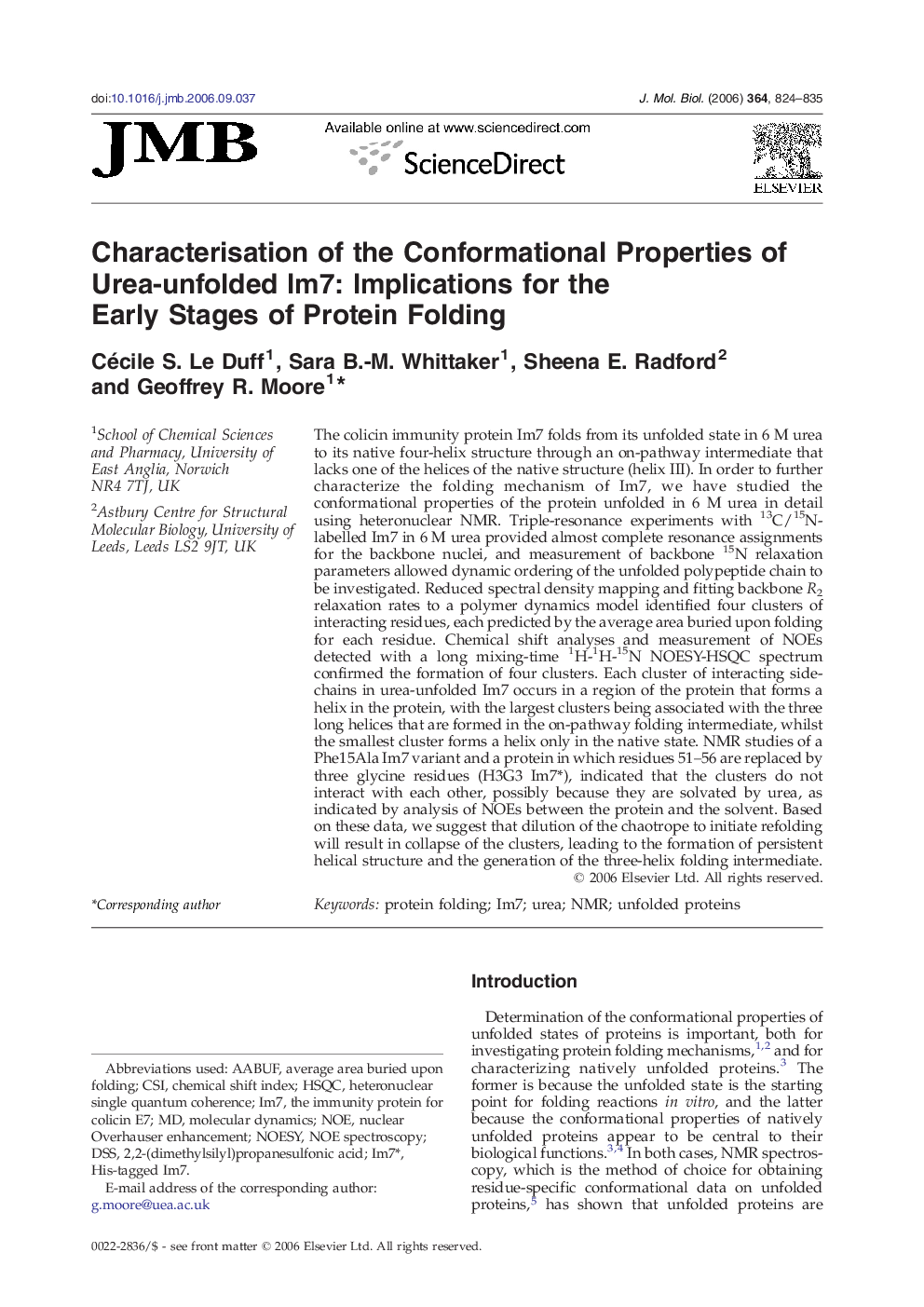| کد مقاله | کد نشریه | سال انتشار | مقاله انگلیسی | نسخه تمام متن |
|---|---|---|---|---|
| 2189058 | 1096195 | 2006 | 12 صفحه PDF | دانلود رایگان |

The colicin immunity protein Im7 folds from its unfolded state in 6 M urea to its native four-helix structure through an on-pathway intermediate that lacks one of the helices of the native structure (helix III). In order to further characterize the folding mechanism of Im7, we have studied the conformational properties of the protein unfolded in 6 M urea in detail using heteronuclear NMR. Triple-resonance experiments with 13C/15N-labelled Im7 in 6 M urea provided almost complete resonance assignments for the backbone nuclei, and measurement of backbone 15N relaxation parameters allowed dynamic ordering of the unfolded polypeptide chain to be investigated. Reduced spectral density mapping and fitting backbone R2 relaxation rates to a polymer dynamics model identified four clusters of interacting residues, each predicted by the average area buried upon folding for each residue. Chemical shift analyses and measurement of NOEs detected with a long mixing-time 1H-1H-15N NOESY-HSQC spectrum confirmed the formation of four clusters. Each cluster of interacting side-chains in urea-unfolded Im7 occurs in a region of the protein that forms a helix in the protein, with the largest clusters being associated with the three long helices that are formed in the on-pathway folding intermediate, whilst the smallest cluster forms a helix only in the native state. NMR studies of a Phe15Ala Im7 variant and a protein in which residues 51–56 are replaced by three glycine residues (H3G3 Im7*), indicated that the clusters do not interact with each other, possibly because they are solvated by urea, as indicated by analysis of NOEs between the protein and the solvent. Based on these data, we suggest that dilution of the chaotrope to initiate refolding will result in collapse of the clusters, leading to the formation of persistent helical structure and the generation of the three-helix folding intermediate.
Journal: Journal of Molecular Biology - Volume 364, Issue 4, 8 December 2006, Pages 824–835